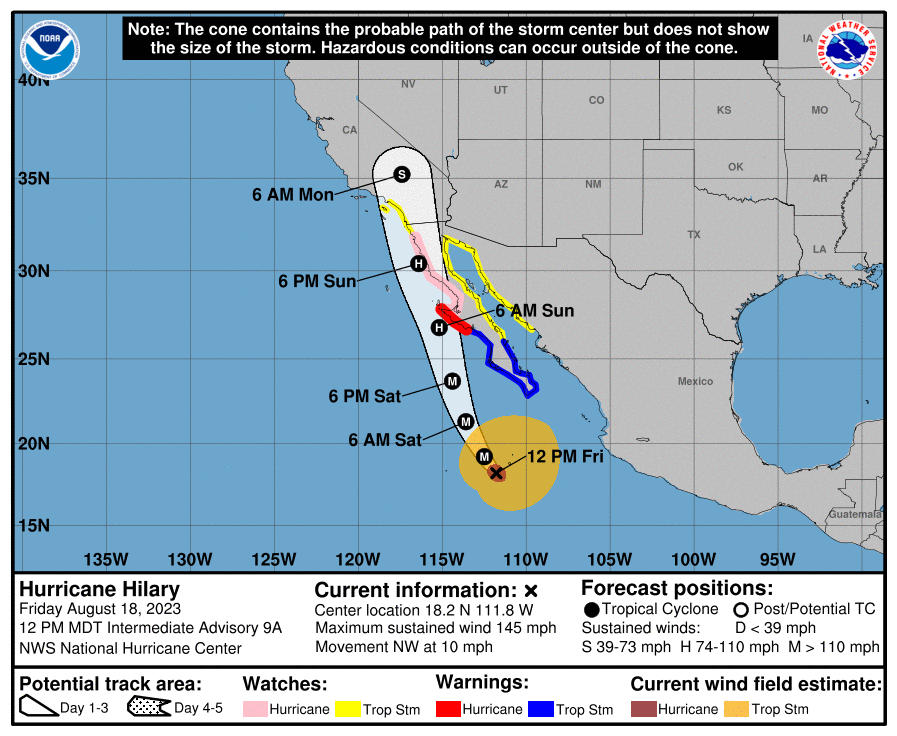066 WTNT43 KNHC 241450 TCDAT3 Tropical Storm Franklin Discussion Number 16 NWS National Hurricane Center Miami FL AL082023 1100 AM AST Thu Aug 24 2023 Franklin appears a little better organized this morning, with a recent convective burst near the center with cloud tops as cold as -80C. The morning Air Force Reserve Reconnaissance mission into Franklin indicates the storm has intensified a bit, with peak flight level winds of 62 kt at 850-mb, SFMR winds in the 50-55 kt range, and a recent dropsonde just to the northeast of the center reported a surface wind of 48 kt. The initial intensity based on this data is set at 50 kt for this advisory. Fixes from the aircraft indicate that Franklin has begun to move to the northeast, with the motion estimated at 040/6 kt. This motion, or even a bit more of a turn to the east-northeast, should continue in the short-term as a weakness persists to the north of Franklin and its motion is more driven by a weak mid-level ridge over the eastern Caribbean Sea. By 48 hours, however, the mid-level ridging is expected to become more pronounced east of the storm, leading to a sharp turn to the north. The biggest change in the guidance this cycle is a slower motion, especially in the first 48-60 hours. The latest NHC track forecast is also slower, but not quite as slow as the TVCN and HCCA consensus aids in this time period. Later on, the track guidance continues to exhibit a fair amount of across track spread in a west-to-east fashion. The ECMWF remains on the left side of this guidance envelope, while the hurricane-regional models and GFS remain on the right side. For now, the NHC track will favor the right side of the guidance envelope, which happens to be near the prior track forecast and HCCA consensus aid. On the forecast track, Franklin should be passing by several hundred miles west of Bermuda between days 4-5. Franklin is continuing to gradually intensify this morning based on the in-situ aircraft data. However, from the satellite structure, the storm remains quite asymmetric due to about 20 kt of westerly vertical wind shear. This shear is expected to persist for at least another 36 hours, and only slow intensification is forecast over this time span. After that, a much more favorable upper-level pattern takes shape as an upper-level low cuts off to the southwest of the tropical cyclone, and most of the guidance responds to this change by showing more significant intensification. The NHC intensity forecast follows this solution, bringing Franklin to near major hurricane intensity in 96h, which remains near the higher end of the intensity guidance this cycle. FORECAST POSITIONS AND MAX WINDS INIT 24/1500Z 22.2N 69.9W 50 KT 60 MPH 12H 25/0000Z 22.6N 68.9W 55 KT 65 MPH 24H 25/1200Z 23.0N 67.7W 55 KT 65 MPH 36H 26/0000Z 23.4N 66.9W 60 KT 70 MPH 48H 26/1200Z 23.9N 66.4W 65 KT 75 MPH 60H 27/0000Z 25.0N 66.6W 70 KT 80 MPH 72H 27/1200Z 26.6N 67.3W 80 KT 90 MPH 96H 28/1200Z 30.0N 68.5W 95 KT 110 MPH 120H 29/1200Z 34.5N 67.5W 90 KT 105 MPH $$ Forecaster Papin




